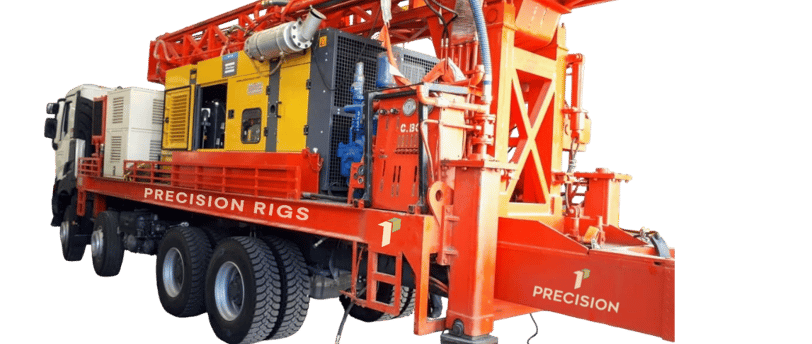Drilling Methods
DRILLINGAUGER DRILLINGROTARY DRILLING
2 min read


Drills have different mining functions, from providing geologists with different samples of soil for analysis to facilitating the extraction of precious minerals that would otherwise be difficult to reach.
How many methods of drilling are there?
As the mining industry advances and more excavating opportunities present themselves, the number of drilling methods increases. Whether it is for exploration, production, land-clearing or geotechnical purposes, there are drilling methods that serve every mining purpose.
Auger Drilling
Auger drilling is the simplest form of drilling. It involves the manual rotation of a helical screw into the ground, usually by two people although auger drills can also be mounted to small vehicles. Once the auger drill is deep enough, the earth is lifted up by the blade of the screw. This kind of drill specializes as an initial geochemical reconnaissance technique, which means it is used in softer soil to find the optimal place to mount a larger drill.
Rotary Air Blasting
Rotary air blasting is the most common shallow drilling method, in which a piston-driven hammer-like object drives the drill bit into the rock, fragmenting the hard surface into chips that are then lifted to the surface via compressed air. This method is ideal for drilling multiple holes in a short period of time, and less ideal for producing geological samples because the airblasting process can compromise the quality of the rock.
Aircore
Aircore drilling involves a three-bladed drill bit with a hollow drill rod in order to penetrate loose soil and rock fragments. After the drilling is complete, compressed air is blasted through the drill rod in order to bring the cuttings to the surface. While this method is typically slower than rotary air blasting, it is more precise, meaning that the samples collected are less prone to contamination.
Reverse Circulation Drilling
Reverse circulation is a popular method for mining exploration that shares similarities with both rotary air blasting and aircore drilling. The same piston-driven hammer is used to drive the drill bit into the rock, however, the larger rigs and machinery associated with reverse circulation drilling allow for the drill bit to be driven even further into the earth. Compressed air is then used to drive the fragmented earth to the surface. This method is ideal for geological exploration, as it produces contaminant-free samples and requires less handling, resulting in cost reduction and faster turnaround times.
Diamond Core Drilling
Diamond core drilling is the most expensive drilling method, as it involves using a drill bit that has been fortified with industrial diamonds attached to hollow drill rods to extract a continuous cylinder of rock from several kilometers below the earth. However, this method also produces the most accurate rock samples as the entire core of a mineral can be brought to the surface as opposed to mere fragments, making it ideal for procuring records on their strength, composition, porosity, etc.
Blast Hole Drilling
Blast hole drilling is a method of drilling used to clear out large amounts of the earth and make the minerals below easier to access. It involves the drilling of holes into the earth. Explosive charges are then placed into each hole and detonated. After the explosion, the broken material is cleared and, if the drilling and blasting occurred underground, the tunnels created by the explosion are fortified to allow for safe human entry. Alternatively to explosives, gas pressure blasting pyrotechnics can also be used to displace the rock for excavation.
